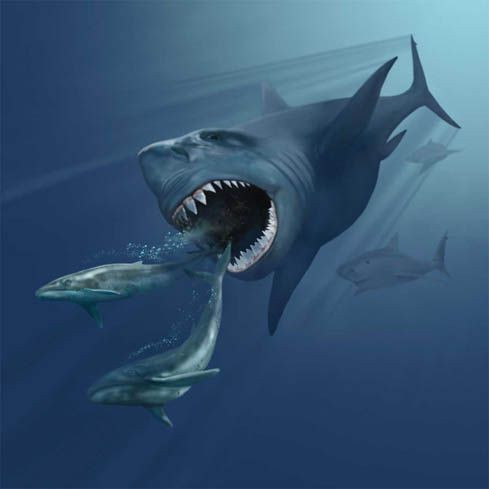Biggest Shark Ever, Other Marine Animals Went Extinct In Newly Discovered Event
The most massive shark ever to exist on Earth may have been just one animal out of the full third of the world’s largest ocean creatures that died off 2 million or 3 million years ago in an extinction event.
Scientists have proposed this previously unknown global extinction event after analyzing fossils from that time, the end of the geological period known as the Pliocene Epoch. What came after was the Pleistocene, which began about 2.6 million years ago, but the researchers say a major portion of the world’s biggest marine life didn’t make it to that era.
Read: Killer Whales Are Murdering Great White Sharks
A study in the journal Nature Ecology & Evolution found at the end of the Pliocene there was “great climatic variability and sea-level oscillations,” including changes that caused “the abrupt loss of productive coastal habitats,” and those factors may have contributed to the demise of many species. The team estimates 36 percent of the marine megafauna, a class that counted mammals, seabirds, turtles, sharks and other water creatures among its ranks, went extinct during this timeframe.
That percentage would have been three times greater than the normal extinction rate leading up to it, which was a time spanning millions of years when life on Earth generally was diversifying and expanding.

One of the creatures to die off was an enormous shark called Carcharocles megalodon. It would have been about 60 feet long, with massive teeth to accompany its huge body, and prowled the waters from about 16 million years ago to around 2.6 million years ago — an extinction time estimate that fits with the newly proposed extinction event.

C.megalodon's teeth are the most common fossils found, some of them as big as 7 inches long. They were triangular and serrated like a great white shark’s teeth, even though the prehistoric sharks were exponentially larger overall, so they may have eaten prey in a similar fashion: biting off chunks of the unlucky animal and, instead of chewing them up, swallowing them whole.
All in all, 9 percent of the world’s shark species, 35 percent of seabirds and 43 percent of sea turtles went extinct, the University of Zurich explained. Warm-blooded animals were particularly at risk, with species of sea cows and baleen whales dying out.
Read: The Most Iconic Extinct American Animals
These are the same kinds of animals that are typically most vulnerable to changes in their environments caused by humans.
Although life bounced back to a degree during the Pleistocene, creating new species like the polar bear and certain types of penguins, “earlier levels of diversity could not be reached again.”
“The marine megafaunal communities that humans inherited were already altered and functioning at a diminished diversity,” lead author Catalina Pimiento said in the statement. “This study shows that marine megafauna were far more vulnerable to global environmental changes in the recent geological past than had previously been assumed.”
© Copyright IBTimes 2024. All rights reserved.





















